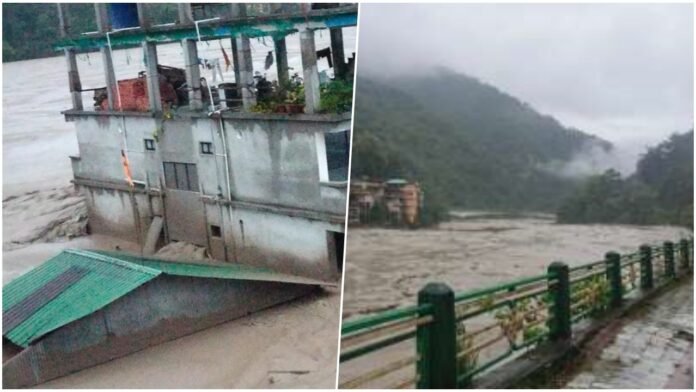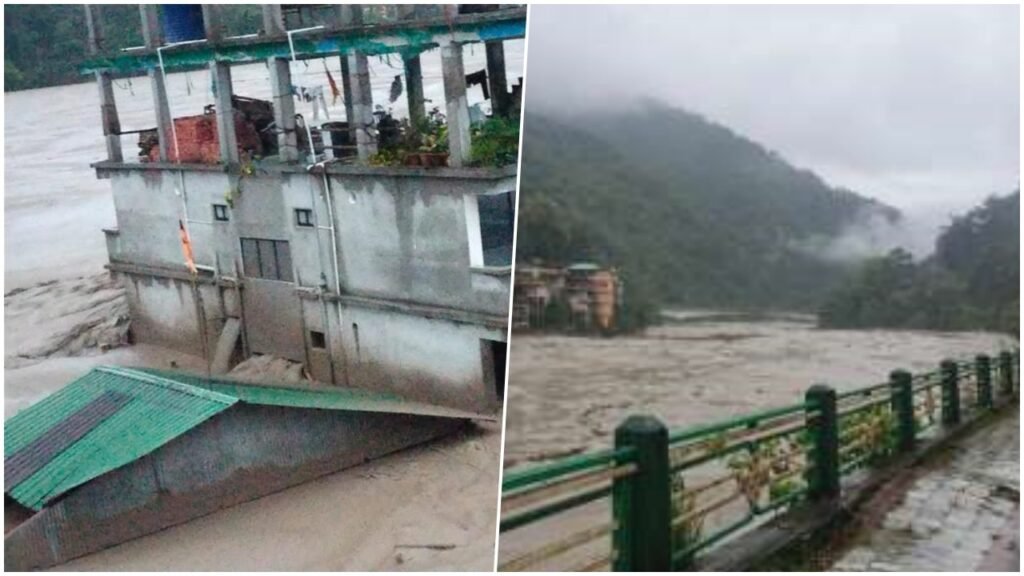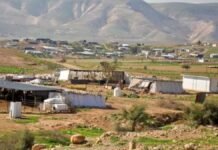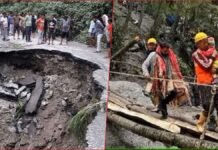
Gangtok: A massive disaster struck Sikkim on Tuesday night when a cloud burst over Lhonak Lake in North Sikkim triggering a flash flood in Teesta River in Lachen Valley. The flood water swept away 23 army personnel who were stationed in some military installations in the valley. The installations were severely damaged and many army vehicles were submerged in water. The Defense Public Relations Officer of Guwahati confirmed the incident and said that efforts are on to ascertain the details.
The cloud burst occurred around 1 p.m. on Tuesday night, causing a sudden surge of water in Lhonak Lake, which is located at an altitude of about 5,000 meters in North Sikkim. The lake overflowed and flooded the Teesta River, which flows through Lachen Valley. The valley is home to several army camps and posts, as it is close to the border with China. The flash flood caught the army personnel off guard and washed them away along with their vehicles and equipment.
The situation worsened when water was released from Chungthang Dam, which is located downstream of Lachen Valley. The dam is used for hydroelectric power generation and irrigation purposes. The release of water from the dam was done as a precautionary measure to prevent any damage to the dam due to the high water level. However, this increased the water level downstream by 15-20 feet, affecting the areas near Singtam, where some army vehicles were parked at Bardang.
The rescue operation is going on to find the missing army personnel and recover the vehicles and equipment. The army has deployed helicopters, boats, and divers for the search operation. The state government has also sent disaster management teams and medical teams to assist the army. The Chief Minister of Sikkim, Prem Singh Tamang, has expressed his grief and concern over the incident and assured all possible help to the army.

The flash flood in Sikkim is one of the worst natural calamities to hit the state in recent times. It has raised questions over the safety and preparedness of the army and the dam authorities in dealing with such situations. It has also highlighted the vulnerability of the Himalayan region to climate change and extreme weather events.















































